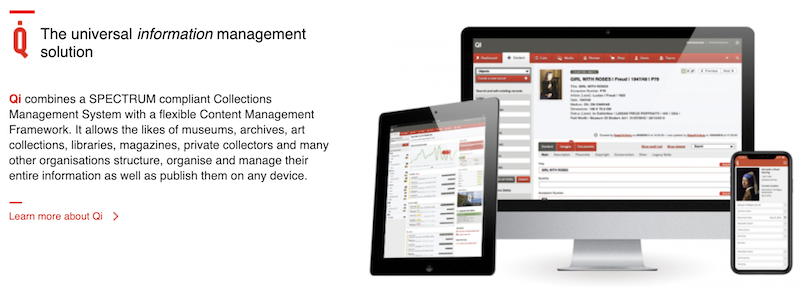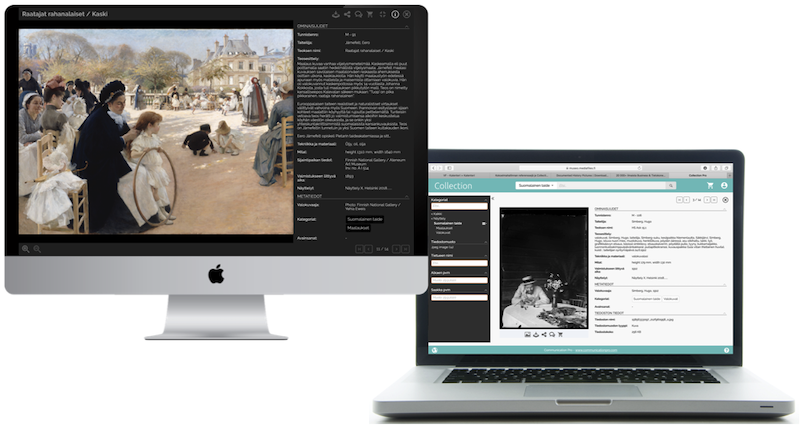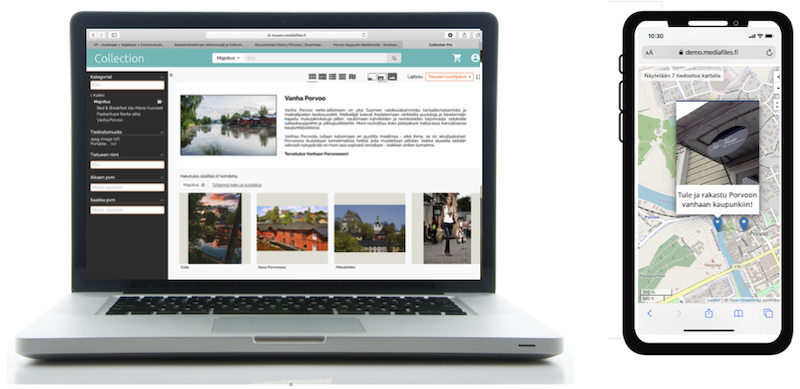
Photo by British Library on Unsplash
What kind of basic tools are needed to secure success in the new norm of the digital age? Well, at least museums need modern IT Systems to manage objects using a modern Collection Management System (CMS), and Digital Asset Management (DAM) is becoming a imperative for nonprofits that communicate with donors and media via visual assets.
What will be the intendants, registrars and administrators new role in the museum? Technological advancements makes not only life easier in the role as registrar and intendant, marketing and administration, but makes it also possible to work from home. Accessing the museums servers content or the cloud via web remotely is just a tremendous change and improvement.
Preservation is mostly perfomed using CMS
Museums have this mandate to collect and preserve things, preferably forever, so you essentially can never get rid of anything in the sense that you don’t really retire information. Therefore archiving in repositories for long-term storing requires a secure hosting environment.

While it’s important to document, manage, and save copies of your digital assets, it may not be appropriate to house all of the data you’re collecting in a Collection Management System (CMS). The storage of cultural heritage data is currently performed in many different ways, using different database formats.
Museums may use different databases and CMSs, both old and new ones. A modern CMS is a Web-based Museum Management System providing real-time museum management where objects and their relations are documented. This preservation fully documents any type of collection and related workflow. Any database that supports the cultural heritage standard "Spectrum standard" is imperative at museums.
Read more about QI CMS: A solution to content + collection management as a Integrated Information Management System
Introducing Digital Asset Management
There might still be need for an additional database as the gamut of technologies for solving the broader archiving and content publishing puzzle with a DAM. By combining DAM with your CMS, museums have the ability to centralize, search and manage their digital assets using comprehensive collection information. Although some DAMs databases may include managing not only files, but actual objects and its relations, just like in CMS, this is not yet a typical scenario in museums.

While merging, migrating or integrating to these modern systems, along with the data conversion process, some object records needs to be altered by standardising some of the fields, especially the location fields and normalising information. This effort makes the information more precise everywhere.
In addition to normal CMS workflows, multiple departments get access rights via DAM and are allowed to input their own information into the database like, as example bibliography, events, and exhibitions. Previously, information was allowed and only added by the collections department. By having other departments involved in the database, there is more ownership.

Everyone is therefore, in turn, a lot more comfortable using the CMSs and DAMs. CMS and DAM should be intertwined throughout a museum. This results in better communication with museum peers, helping to knock down traditional department silos, and a museum-wide improvement in saving time and stress, while making your team and workflows much more efficient.
Digital Asset Management (DAM) includes activities associated with the creation, cataloguing, storing, retrieving and backing up of museums assets. The purpose of DAM is to integrate best practices within workflows to improve access to resources and make them available for reuse.
Integrating your DAM activity alongside your CMS workflows will ensure your best chance at widespread adoption of DAM at your museum.
Read more about DAMs and CMSs: GLAM organisations benefit from CMS and DAM tools combined in one system.
Assets and objects become digital
The Museum’s approach to photography is another ongoing major change. For the most part, all object photography is now born digital. Now everything is or gets digital. This means you can take as many photographs of each object as you want and import them into CMS and DAM. Still occasionally, a collection needs to be pulled out to scan it.
Assets are generated in museums with new acquisitions, photography updates for collection objects, and conservation examinations, but they are also created and used by many other departments in your institution such as education, marketing, website and digital departments, exhibitions, and events, to name a few.
Using DAM enables museums to share assets with partners, media and external collaborators with guest access and distribute content to users so that everybody can see it quickly, understand what you have and download it in a variety of different sizes and formats according to the users needs and access rights.

Digital Asset Management will result in much better communication with your peers, helping to knock down traditional department silos, and a museum-wide improvement in saving time and stress, while making teams communicate properly and making workflows much more efficient.
Digital assets are used throughout the museum institution by all of the team members, and even members of the public. From curators and researchers, educators, web developers, and members of your marketing, collections, and digital preservation teams, everyone needs access to digital media.
Using a DAM with a simple user interface that can be easily customised for different users can help cross your team’s user adoption hurdle. Being able to quickly find, distribute and share assets can save countless hours searching for the right, authoritative files. Offering the museums cultural heritage from any device, including mobile phones with its additional features, is enableing the audience to communicate in a comfortable way.

Publish to public websites world wide
Using DAM enables museums to publish and share assets with partners, media and external collaborators with guest access and distribute content to users so that everybody can see it quickly, understand what you have and download it in a variety of different sizes and formats according to the users needs and access rights. To enable rich media to be viewed, zoomed in for details and explored in virtual tours like 360° images and 360° video creates an immersive user experiance added with embedded 3D Images, sound and info text.
Using DAM to offer and share collections online for comments is another advantage especially in the cultural heritage scene, as useful unique local information (metadata) from persons can be added to a collection or object and thereby enhance the objects information value. This way research can be extended to outsourcing and performed remotely.
Not only are the museums own websites and social media platforms the channels where museum may publish visual content. Museums can target a larger audience simply by connecting their museum database to the rest of the world, and make visual appealing content publicly available by means of open interfaces such as to Finna (for Finland) and Europeana ( for EU).
Read more about new techologies: Is adapting new digital technology and visual communication becoming a game changer at museums?
Integrated workflows between DAMs and Collection Management
Having a DAM system as a single source solution makes processes easier to handle throughout the museum. Much of the object data is digital, a Content Management process can overlap with DAM; but not all data collected in a Collection Management is in the DAM system, and should not be either. Synchronising DAM with Collection Management results in less manual work and improved searches through automation.
DAMs or CMS should never exist in a silo. If integration with a collection management within the museum is not implemented, searches may require too much effort. Files are then living in multiple different containers. To find a file can become an absolute pain.
Some DAM databases may include managing actual objects and its relations and will affect the digital content management at museums in coming years.
Check for more information on CMS and DAM systems at www.communicationpro.com
 |
Author Rolf Koppatz Rolf is the CEO and consultant at Communication Pro with long experience in DAMs, Managing Visual Files, Marketing Portals, Content Hubs and Computer Vision. Contact me at LinkedIn. |
